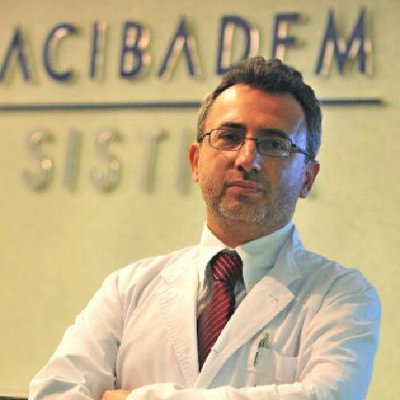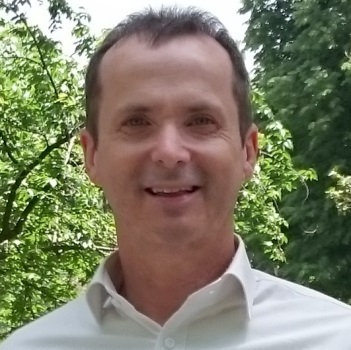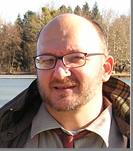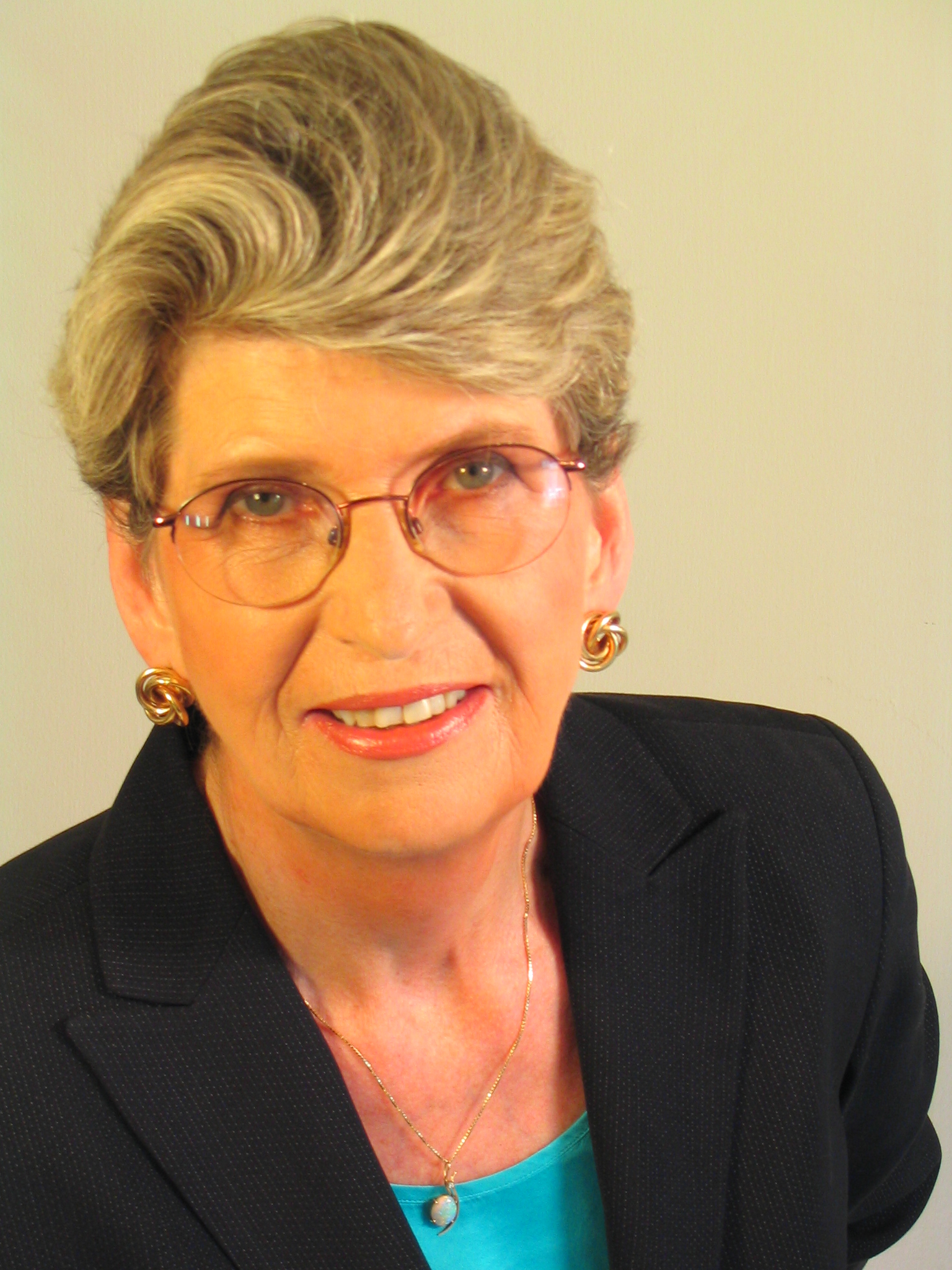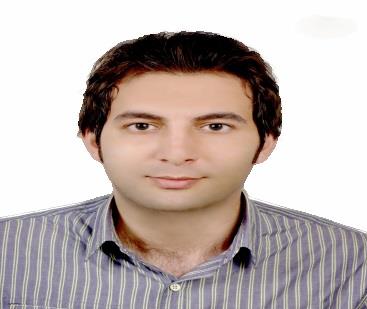Theme: Expanding the possible methods and approaches in the field of Cosmetic Dermatology & Haircare
Cosmetic Dermatology-2015
It is our greatest pleasure to welcome you to the official website of International conference and exhibition on Cosmetic Dermatology & Hair care , that aims at bringing together the professors, researchers, clinicians, educators, program developers, Dermatologists, Cosmetic Dermatologists and hair transplantation surgeons to provide an international forum for the dissemination of original research results, new ideas and practical development experiences which concentrate on both theory and practices in our Medical meetings. The conference will be on December 7-8, 2015 at Philadelphia, USA. The theme of the conference is around, "Expanding the Possible methods and approaches in the field of Cosmetic Dermatology & Hair care”.
Cosmetic Dermatology & Haircare conference is hosting presentations from editors of prominent referred journals, renowned and active investigators and decision makers in the field of ,Dermatology, Aesthetic medicine,Cosmetology trichology conference. Cosmetic dermatology-2015 Organizing Committee Members also invites Young Researchers to submit abstracts reporting their latest scientific findings for Poster sessions.
OMICS International Organizes 300+ Conferences Every Year across USA, Europe & Asia with support from 1000 more scientific societies and Publishes 500+ Open access journals which contains over 30000 eminent personalities, reputed scientists as editorial board members.
Now a days these Cosmetic Dermatology & Haircare meetings are extremely important for the diffusion of the Cosmetic Dermatology and, in this case, crossing geographical limits, many dermatologists and other medical experts in related fields from various countries and different cultures, will be together for the exchange of knowledge, learning, leisure, tourism, meeting and reunions.
The Cosmetic Dermatology & Haircare event will focus on the latest developments in all areas related to Cosmetic Dermatology as well as in the discussion of issues related to skin diseases-in Dermatology, beauty and health cannot be dissociated. Therefore, several contemporary approaches of cosmetic and general and surgical Dermatology will be included in the discussions.
The global cosmetic dermatology devices market is expected to reach $11,337.0 million by 2019 from $6,578.23 million in 2014, poised to grow at a CAGR of 11.50% between 2012 and 2019. Rising incidence of skin disorders and increasing awareness of aesthetic procedures are the primary growth drivers of this market during the forecast period (2014–2019). Moreover, technological advancements and increasing healthcare expenditure are also expected to drive the market growth. However, reimbursement issues and stringent regulatory policies for medical devices may hinder the growth of this market.This report segments the global dermatology devices market by product, application, and geography. The product segments included in this report are diagnostic devices and treatment devices. The diagnostic devices product segment is further sub segmented into dermatoscopes, microscope, and imaging techniques. The treatment devices segment is sub segmented into light therapy devices, lasers, electrosurgical equipment, liposuction devices,Microdermabrasion, and cryotherapy devices. The application segments included in this report are diagnostic applications and treatment applications. The diagnostic applications are further segmented into Skin cancer diagnosis and other diagnostic applications, whereas the treatment applications include hair removal, skin rejuvenation, pigmented lesions, vascular lesions, wrinkle removal, skin resurfacing, acne, psoriasis, tattoo removal, and other treatment applications.Geographic analysis reveals that North America accounted for the largest share of the global dermatology devices market in 2014. Growth in this market can be attributed to the rising incidence of skin disorders and increasing awareness of aesthetic procedures. The Asian regional segment, on the other hand, is expected to register a double-digit growth from 2014 to 2019, owing to the rising standard of living, growing demand for quality medical care, increasing healthcare spending, government initiatives, and enhanced awareness about healthcare in this region.
Cosmetic dermatology might be defined as that aspect of the practice of dermatology that emphasizes lookin' good." While cutaneous medicine and surgery focuses on the diagnosis, treatment, and prevention of skin disease, there is a significant aspect of the specialty directed towards improving the patient's appearance. Cosmetic dermatology-2015 provides an opportunity for the delegates to update their knowledge in the field of Cosmetic dermatology, Trichology, Dermatology, Cosmetology conference and Business Aesthetics with live workshops, discussion on recent researches, discussions on current trends and poster presentations. It is a platform for experts all around the world, to meet, interact and exchange new research ideas.
Aesthetic Medicine: A Booming Discipline
Aesthetic medicine is an inclusive term for specialties that focus on improving cosmetic appearance through the treatment of conditions including (but not limited to) scars, skin laxity, wrinkles, moles, liver spots, excess fat, cellulite, unwanted hair, skin discoloration, and spider veins. Traditionally, aesthetic medicine includes dermatology, reconstructive surgery and plastic surgery, however it is not strictly limited to these fields. Aesthetic medicine includes both surgical procedures (liposuction, facelifts, breast implants, Radio frequency ablation) and non-surgical procedures (radio frequency skin tightening, non-surgical liposuction, chemical peel), and practitioners may utilize a combination of both. Although aesthetic medicine procedures are typically elective, they can significantly improve quality of life, psychological wellbeing and social function.
Dermatology is a discipline of medical science that deals with the skin, dermal diseases and associated treatment regime. Clinical practises in relation to Dermatology meetings embrace several sub disciplines including dermatitis, cosmetic dermatology, dermatopathology, immunodermatology, pediatric dermatology, cutaneous lymphoma, lesions, melanoma, blisters etc.
Dermatovenereology is the branch of medicine that deals with the study and treatment of skin and venereal diseases. Dermatology is concerned with all the disorders of the outer skin and inner mucous membranes. Venereology is concerned with disorders that can be transmitted through sexual contact. Sexually transmissible infections (STI’s) are comprised by the venereological part of the specialty: Venereology includes the diagnosis, treatment and prevention of sexually transmissible infections and other medical conditions of the genital tract. It also concerns the promotion of good sexual health and Recent Advances in Venereology.
Skin Cancer And cosmetic dermatology
Skin cancers are cancers that arise from the skin. They are due to the development of abnormal cells that have the ability to invade or spread to other parts of the body. There are three main types: basal cell cancer (BCC), squamous cell cancer (SCC) and melanoma. The first two together along with a number of less common skin cancers are known as nonmelanoma skin cancer (NMSC).Basal cell cancer grows slowly and can damage the tissue around it but is unlikely to spread to distant areas or result in death. It often appears as a painless raised area of skin that may be shiny with small blood vessel running over it or may present as a raised area with an ulcer. Squamous cell cancer is more likely to spread. It usually presents as a hard lump with a scaly top but may also form an ulcer. Melanomas are the most aggressive. Signs include a mole that has changed in size, shape, color, has irregular edges, has more than one color, is itchy or bleeds. Greater than 90% of cases are caused by exposure to ultraviolet radiation from the Sun. This exposure increases the risk of all three main types of skin cancer. Exposure has increased partly due to a thinner ozone layer. Tanning beds are becoming another common source of ultraviolet radiation. For melanomas and basal cell cancers exposure during childhood is particularly harmful. For squamous cell cancers total exposure, irrespective of when it occurs, is more important. Between 20% and 30% of melanomas develop from moles. People with light skin are at higher risk as are those with poor immune function such as from medications or HIV/AIDS. Diagnosis is by biopsy. Actinic keratosis, also called solar keratosis, is a precancerous skin condition that develops in sun-exposed skin, especially on the face, hands, forearms, and the neck. It is seen most often in pale-skinned, fair-haired, light-eyed people, beginning at age 30 or 40 and becoming more common with age. Treatment is dependent on type of cancer, location of the cancer, age of the person, and whether the cancer is primary or a recurrence. Treatment is also determined by the specific type of cancer. For a small basal cell cancer in a young person, the treatment with the best cure rate (Mohs surgery or CCPDMA) might be indicated. In the case of an elderly frail man with multiple complicating medical problems, a difficult to excise basal cell cancer of the nose might warrant radiation therapy (slightly lower cure rate) or no treatment at all. Topical chemotherapy might be indicated for large superficial basal cell carcinoma for good cosmetic outcome, whereas it might be inadequate for invasive nodular basal cell carcinoma or invasive squamous cell carcinoma.[citation needed]. In general, melanoma is poorly responsive to radiation or chemotherapy. For low-risk disease, radiation therapy (external beam radiotherapy or brachytherapy), topical chemotherapy (imiquimod or 5-fluorouracil) and cryotherapy (freezing the cancer off) can provide adequate control of the disease; all of them, however, may have lower overall cure rates than certain type of surgery. Other modalities of treatment such as photodynamic therapy, topical chemotherapy, electrodessication and curettage can be found in the discussions of basal cell carcinoma and squamous cell carcinoma. Mohs' micrographic surgery (Mohs surgery) is a technique used to remove the cancer with the least amount of surrounding tissue and the edges are checked immediately to see if tumor is found. This provides the opportunity to remove the least amount of tissue and provide the best cosmetically favorable results. This is especially important for areas where excess skin is limited, such as the face. Cure rates are equivalent to wide excision. Special training is required to perform this technique. An alternative method is CCPDMA and can be performed by a pathologist not familiar with Mohs surgery In the case of disease that has spread (metastasized), further surgical procedures or chemotherapy may be required. Hair loss, also called alopecia, is a potential side effect of chemotherapy and radiation therapy. Hair loss may occur throughout the body, including the head, face, arms, legs, underarms, and pubic area. Hair may fall out entirely, gradually, or in sections. In some cases, hair will simply become thin—sometimes unnoticeably—and may become duller or dryer. Hair loss related to cancer treatment is usually temporary. Most of the time, hair will grow back. Relieving side effects is an important part of cancer care and treatment. Treatment to manage side effects is called symptom management, palliative care, or supportive care. Radiation therapy and chemotherapy can cause hair loss by harming the cells that help hair grow. During the production of a hair, the follicle undergoes dynamic changes from an actively growing phase (anagen), to a remodeling phase (catagen), and finally to a quiescent phase (telogen), only to start growing again. Two key elements that control hair follicle cycling are the follicular epithelial stem cells and the specialized mesenchymal cells that constitute the follicular papilla. Trichofolliculoma is a cutaneous condition characterized by a benign, highly structured tumor of the pilosebaceous unit, Basal cell carcinomas (BCCs) are hedgehog-driven tumors that resemble follicular and interfollicular epidermal basal keratinocytes and hence long have been thought to arise from these cells. However, the actual cell of origin is unknown. According to the American Hair Loss Association, two-thirds of men will experience hair loss by the age of 35. But women are also affected, making up 40% of all hair loss sufferers. Affecting self-image and emotional well-being, the condition has been a difficult one to treat. But a new study brings hope - in the form of human hair-follicle-generating stem cells.
Plastic & Reconstructive surgery
Plastic surgery is a medical specialty concerned with the correction or restoration of form and function of the body. Though cosmetic or aesthetic surgery is the most well-known kind of plastic surgery, plastic surgery itself is not necessarily considered cosmetic and includes many types of reconstructive surgery, craniofacial surgery, hand surgery, microsurgery, and the treatment of burns. Undergoing a plastic surgery has become a trend in certain classes of society, but there are some serious repercussions that have to be considered before going into surgery.
Cosmetic plastic surgery includes surgical and nonsurgical procedures that reshape normal structures of the body in order to improve appearance and self-esteem. Healthy individuals with a positive outlook and realistic expectations are appropriate candidates for cosmetic procedures. Plastic surgery is a personal choice and should be done for yourself, not to fulfill someone else's desires or to try to fit an ideal image. Because it is elective, cosmetic surgery is usually not covered by health insurance. The most popular procedures done these days are lipoplasty (liposuction), eyelid surgery (blepharoplasty), breast implants, nose jobs (rhinoplasty), ear reshaping (otoplasty or pinnaplasty),facelifts (rhytidectomy), tummy tuck (abdominoplasty),Cosmetic Gynecology, Vein Treatment (Sclerotherapy, Varicose Vein Treatment) and Botox injections.
Hair care conference is an overall term for parts of hygiene and cosmetology involving the hair on the human head. Hair care will differ according to one's hair type and according to various processes that can be applied to hair. All hair is not the same; hair is a manifestation of human diversity. In this article, 'hair care' is taken to mean care of hair on the human head, but mention may be made of processes and services which impact hair on other parts of the body. This includes men's and women's facial, pubic, and other body hair, which may be colored, trimmed, shaved, plucked, or otherwise removed with treatments such as waxing, sugaring, and threading. These services are offered in salons, barbershops, and day spas, and products are available commercially for home use. Laser hair removal and electrolysis are also available, though these are provided (in the US) by licensed professionals in medical offices or speciality spas.This trend is being witnessed particularly among consumers looking for certified natural products that perform on par with the petrochemical alternatives. By cleverly using its visionary excellence to align with the current Mega Trends witnessed in the global space, Inolex made the successful launch of the high-performance Emulsense cationic system. Using this cationic system, cosmetic product manufacturers are able to increase the effectiveness of the product as a natural conditioner. This eliminates the need for them to incorporate any other ingredient in the final formulation for conditioning, thereby keeping the label clean. The power of individualism in the growing space of multicultural beauty has led to a shift in beauty ideals where men and women are embracing their cultural identities and expressing themselves through fashion statements where curls and afros become the center of attention. .Curl pattern, hair porosity and density are important factors in determining hair care needs. The curlier the hair, the more areas of discontinuity in the cuticle layer, creating higher levels of porosity which are present in curly and coily hair. Density determines hair volume by assessing how closely individual strands of hair are packed together on the scalp. Curly hair with medium density is in need of enhancing the hair’s texture and playing up volume, while coily hair with high density calls for curl holding and volume reduction.
In hair care, silicones are widely used in shampoos and conditioners because of their excellent conditioning properties. Consumers who are interested in silicone-free hair care still expect the same benefits as they get from conventional silicone-based solutions. Whether they are used in clear or opaque shampoo formulations, hair care products without silicones can often provide superior conditioning, and even a noticeable repair effect and protection against hair breakage. One such high-performance alternative to high-molecular silicone grades is Lame soft Care (INCI: PEG-4 Distearyl Ether (and) Sodium Laureth Sulfate (and) Distearyl Ether (and) Dicaprylyl Ether).This conditioning agent is easy to incorporate into formulations and offers very good conditioning performance. It also offers excellent hair breakage protection: physical measurements on treated hair strands have demonstrated that a shampoo containing only three percent of ”micronized waxes” delivers the same outstanding anti-hair breakage protection as three leading benchmark silicone-based shampoos used in combination with their conditioner. Hair damage is essentially any condition where by one or more of the hair structures,(cuticles cortex, medulla, etc.), are physically or chemically altered to the extent that they are unable to return to their original state. Hair coloring is the practice of changing the color of hair. The main reasons for this practice are cosmetic (e.g., to cover gray hair, to change to a color regarded as more fashionable or desirable, or to restore the original hair color after it has been discolored by hairdressing processes or sun bleaching). Hair dyeing, which is an ancient art, involves treatment of the hair with various chemical compounds. Today, hair coloring is immensely popular, with over 75 percent of American women dyeing their hair, and globally hair colorants are a rapidly growing over-$7 billion industry. At home coloring in the United States reached $1.9 billion in the year 2011, and is expected to raise to $2.2 billion by 2016.
Style – Devices and Formulations
Curling and straightening hair requires the stylist to use a curling rod or a flat iron to get a desired look. These irons use heat to manipulate the hair into a variety of waves, curls and reversing natural curls and temporarily straightening the hair. Straightening or even curling hair can damage it due to direct heat from the iron and applying chemicals afterwards to keep its shape. There are irons that have a function to straighten or curl hair even when its damp (from showering or wetting the hair), but this requires more heat than the average iron(temperatures can range from 300-400 degrees). Heat protection sprays, and hair repairing shampoos and conditioners can protect the hair from damage caused by the direct heat from the irons. Hair styling is a major world industry, from the salon itself to products, advertising, and even magazines on the subject. In the United States, most hairstylists are licensed after obtaining training at a cosmetology or beauty school .In recent years; competitive events for professional stylists have grown in popularity. Stylists compete on deadline to create the most elaborate hairstyle using props, lights and other accessories. Hair being straightened with a flat iron. Styling may include hair irons (including flat, curling, and crimping irons), hair dryers, and hair rollers. Hair dressing might also include the use of hair product to add texture, shine, curl, volume or hold to a particular style. Hairpins are also used when creating particular hairstyles. Their uses and designs vary over different cultural backgrounds. Styling products aside from shampoo and conditioner are many and varied. Leave-in conditioner, conditioning treatments, mousse, gels, lotions, waxes, creams, clays, serums, oils, and sprays are used to change the texture or shape of the hair, or to hold it in place in a certain style. Applied properly, most styling products will not damage the hair apart from drying it out; most styling products contain alcohols, which can dissolve oils. Many hair products contain chemicals which can cause build-up, resulting in dull hair or a change in perceived texture. Care of human or other natural hair wigs is similar to care of a normal head of hair in that the wig can be brushed, styled, and kept clean using hair care products.
Healthy looking hair is in general a sign of good health and good hair-care practices. Most healthy individuals have adequate nutrients in their diet; however some people do not have access to good nutrition, others have medical illnesses that predispose them to nutritional deficiency which influence scalp / body hair. Nutrition is a complex subject - the effects of correct nutrition are indirect and often slow to appear. Hair in particular is slow to respond to any stimulus. Trials have indicated that correct nutrition is instrumental in healthy hair growth, and conversely many deficiencies correlate with hair loss. Hair nutrition is therefore a vital part of any treatment regime. Healthy hair growth requires a complexity of nutrients and a ready supply of oxygen but comparatively few authoritive studies have trialled ingredients to maintain or promote hair growth. However a balanced, bioavailable formula to protect and maintain hair growth is vital. Dietary supplements marketed to thicken hair or make it grow faster may prove of nil value. Hair grows in cycles of various phases: anagen is the growth phase; catagen is the involuting or regressing phase; and telogen, the resting or quiescent phase. Each phase has several morphologically and histologically distinguishable sub-phases. Hair care will differ according to one's hair type and according to various processes that can be applied to hair. All hair is not the same; hair is a manifestation of human diversity .Historically, genetic engineering in hair loss took a single gene approach. This is where a single gene was examined in a specific group of people or families. Then another single gene would be examined in a specific group and so on. The myth that hair loss is passed down from a specific side of the family sprang from a paper published in 1916. Dr. Dorothy Osborne stated that a specific pattern of baldness was inherited from only one specific parent. This theory has since been proven to be false. Hair is a useful bio-indicator to estimate human exposure to trace elements, because it is easy to collect and can reflect relatively long term exposure. However, trace elements in hair do not always reflect the levels arising only from endogenous uptake due to the possible contamination by exogenous materials such as soil, dust, and water that might be adhering to it. The objective of this study is to evaluate the suitability of hair as a bio-indicator of trace elements exposure using (i) determination of relative affinity of various metals by multi elements adsorption experiment, and (ii) elemental mapping of hair sections using synchrotron radiation micro beam X-ray fluorescence (μ-SXRF). Relative affinities of 11 metals and metalloids determined by adsorption experiment were: Hg2+> Pb2+ > Cu2+ > Cr3+> Cd2+> As(III) > Se(IV) > Zn2+ > Co2+ > Sb(III) > Ni2+. Clearly higher affinity for soft metals suggested that soft ligands act as the adsorption sites for these metals,and also adsorbed soft metals cannot be removed by simple washing because of the existence of covalent bonding between the elements.During the production of a hair, the follicle undergoes dynamic changes from an actively growing phase (anagen), to a remodeling phase (catagen), and finally to a quiescent phase (telogen), only to start growing again. Two key elements that control hair follicle cycling are the follicular epithelial stem cells and the specialized mesenchymal cells that constitute the follicular papilla.
Modern Techniques in Hair Transplantation
Follicular unit extraction (FUE), also known as follicular transfer (FT), is one of two primary methods of obtaining follicular units, naturally occurring groups of one to four hairs, for hair transplantation.The other method is called strip harvesting. In FUE harvesting, individual follicular units are extracted directly from the hair restoration patient's donor area, ideally one at a time. This differs from strip-harvesting because, in strip harvesting, a strip of skin is removed from the patient and then dissected into many individual follicular units. The follicular units obtained by either method are the basic building blocks of follicular unit transplantation (FUT).Nowadays FUE technology has grown into Advanced FUE. The main difference is that Advanced FUE enables the creation of larger donor pools by harvesting follicles from areas outside the head such as: chest, legs, arms, abdomen, back, face, and beard. Also Advanced FUE addresses the fact that hair often grows in a curved trajectories. With standard FUE surgical there is the assumption that this growth occurs as a straight line. This entails a risk of damaging the follicles during the excision and retrieval of the grafts.Androgenic alopecia (also known as androgenetic alopecia, alopecia androgenetica, or male pattern baldness) is hair loss that occurs due to an underlying susceptibility of hair follicles to androgenic miniaturization. Hair Transplantation conference is a surgical technique that moves individual hair follicles from a part of the body called the 'donor site' to bald or balding part of the body known as the 'recipient site'. Nowadays, there are two popular hair transplant methods, and both use micrograft technique to produce natural looking results. These hair transplant methods are known as FUT (Follicular Unit Transplant) and FUE (Follicular Unit Extraction).a. FUT hair transplant: FUT is the first method used by the surgeons when they started practicing micrograft hair transplant technique. In FUT, the surgeon extracts a strip of scalp from the back of the head. After closing the remaining scalp, the surgery team divides this strip into micrografts, also known as follicular units. The plantation of these small micrografts requires very small holes. Your surgeon creates these tiny holes and plants micrografts in these holes.b. FUE hair transplant: FUE is a more advanced micrograft hair transplant technique. Instead of removing a strip of your scalp, your surgeon extracts individual hair follicles one by one. This results in less trauma to the donor site. Additionally, the FUE method does not produce a linear scar, as FUT method produces. The FUE method produces tiny pinhole scars that are not visible even with very short hair.
Hair Loss Management and Modern Approaches
Androgenic alopecia (also known as androgenetic alopecia, alopecia androgenetica, or male pattern baldness) is hair loss that occurs due to an underlying susceptibility of hair follicles to androgenic miniaturization. It is the most common cause of hair loss and will affect up to 70% of men and 40% of women at some point in their lifetimes. Men typically present with hairline recession at the temples and vertex balding, while women normally thin diffusely over the top of their scalps. Both genetic and environmental factors play a role, and many etiologies remain unknown.Classic androgenic hair loss in males begins above the temples and vertex, or calvaria, of the scalp. As it progresses, a rim of hair at the sides and rear of the head remains. This has been referred to as a 'Hippocratic wreath', and rarely progresses to complete baldness. The Hamilton-Norwood scale has been developed to grade androgenic alopecia in males.Female androgenic alopecia is known colloquially as "female pattern baldness", although its characteristics can also occur in males. It more often causes diffuse thinning without hairline recession; and, like its male counterpart, rarely leads to total hair loss. The Ludwig scale grades severity of androgenic alopecia in females.Hair loss in children is a more prevalent occurrence than most people imagine. Currently children's hair loss is responsible for approximately 3% of all pediatric office visits in this country. Trichotillomania, also known as trichotillosis or hair pulling disorder) is an impulse disorder characterized by the compulsive urge to pull out one's hair, leading to noticeable hair loss and balding, distress, and social or functional impairment. It appears in the ICD chapter 5 on Mental and behavioural disorders and is often chronic and difficult to treat.Trichotillomania may be present in infants, but the peak age of onset is 9 to 13. It may be triggered by depression or stress. Owing to social implications the disorder is often unreported and it is difficult to accurately predict its prevalence; the lifetime prevalence is estimated to be between 0.6% and 4.0% of the overall population. Common areas for hair to be pulled out are the scalp, eyelashes, eyebrows, legs, arms, hands, nose and the pubic areas.
Potential Risks: Tattoos, Cosmetics, Hair colors and Procedures
As with tattoos, permanent makeup may have complications, such as allergies to the pigments, formation of scars, granulomas and keloids, skin cracking, peeling, blistering and local infection.The use of unsterilized tattooing instruments may infect the patient with serious diseases such as HIV and hepatitis. Removal problems may also ensue, due to patient dissatisfaction or regret, and they may be particularly difficult to remove in places such as eyelids and lips without leaving permanent sequelae. Compliance with 'standard precautions' and a uniform code of safe practice should be insisted upon by a person considering undergoing a cosmetic tattoo procedure. It is essential that technicians use appropriate personal protective equipment to protect the health of the technician and the client particularly in the prevention of transmission of blood borne pathogens. Hair conditioner is a hair care product that changes the texture and appearance of hair. There aren't any bad side effects for applying conditioner everyday. However, applying conditioner can do things such as making the hair limp if you're looking for more fullness and volume, but then again, as long as you are using a volume shampoo and conditioner then you should have that problem. air coloring is the practice of changing the color of hair. The main reasons for this practice are cosmetic (e.g., to cover gray hair, to change to a color regarded as more fashionable or desirable, or to restore the original hair color after it has been discolored by hairdressing processes or sun bleaching). Hair dyeing, which is an ancient art,involves treatment of the hair with various chemical compounds. Hair coloring involves the use of chemicals capable of removing, replacing, and/or covering up pigments naturally found inside the hair shaft. Use of these chemicals can result in a range of adverse effects, including temporary skin irritation and allergy, hair breakage, skin discoloration and unexpected hair color results.In certain individuals, the use of hair coloring can result in allergic reactions and/or skin irritation. Symptoms of these reactions can include redness, sores, itching, burning sensation and discomfort. Symptoms will sometimes not be apparent immediately following the application and processing of the tint, but can also arise after hours or even a day later.To help prevent or limit allergic reactions, the majority of hair color products recommend that the client conduct a patch test before using the product. It is recommended that latex or nitrile gloves be worn to protect the hand. Most of the commercially available hair care products today use harmful, potentially carcinogenic ingredients.of the 10,500 chemical ingredients used in the personal care products, just 11% have been assessed for health and safety. Hundreds of chemicals – some safe and some known to be hazardous – are present in our personal care products. Deep conditioning should be done sparingly - once per week for most hair types. Deep conditioning the hair more than this is could cause the opposite intended effect. If you over-use a protein-based deep conditioner to strengthen and add body, it could cause the hair to become dry and brittle. If you over-use a moisturizing or oil-based deep conditioner, it could cause your hair to become limp. The actual effect of the chemicals and the dryers is that they make the hair dry and that makes it brittle. The hair can get extremely damaged and in some cases they get burnt also. The negative effects that occur are relatively much higher than the other styling done to your hair.If you are choosing hair straightening process done at home, select the dryer or the straightener that is based on ionic systems. The main reason is that their heating surface is non-sticky and causes less damage to the hair. Trichobezoar, rapunzel syndrome, tricho-plaster bezoar - a report of three cases. Trichobezoar is an uncommon entity observed mostly in young women. Symptoms in presenting patients are usually due to the large mass of the bezoar or malabsorption of nutrients. Trichobezoar is almost always associated with trichotillomania and trichophagia.
The Business of Cosmetic dermatology and Hair care
If you are running an Cosmetic dermatology and Hair care Business, we are including training and consulting workshops for medical practices, medspas, and spas offering an appropriate business model, and instant tips on increasing your Business. It includes staff service training- front desk staff, marketing (including social media) and providing an efficient model to increase your business.
Conference Highlights
- Aesthetic Medicine: A Booming Discipline
- Clinical Dermatology
- Dermato-Venereology
- Skin Cancer And cosmetic dermatology
- Plastic & Reconstructive surgery
- Cosmetics Procedures
- Hair Care
- Style – Devices and Formulations
- Recent Advances in Trichology
- Modern Techniques in Hair Transplantation
- Hair Loss Management and Modern Approaches
- The Business of Cosmetic dermatology and Hair care
To share your views and research, please click here to register for the Conference.
To Collaborate Scientific Professionals around the World
| Conference Date | December 07-08, 2015 | ||
| Sponsors & Exhibitors |
|
||
| Speaker Opportunity Closed | Day 1 | Day 2 | |
| Poster Opportunity Closed | Click Here to View | ||
Useful Links
Special Issues
All accepted abstracts will be published in respective Our International Journals.
- Hair : Therapy & Transplantation
- Journal of Clinical & Experimental Dermatology Research
- Anaplastology
Abstracts will be provided with Digital Object Identifier by













